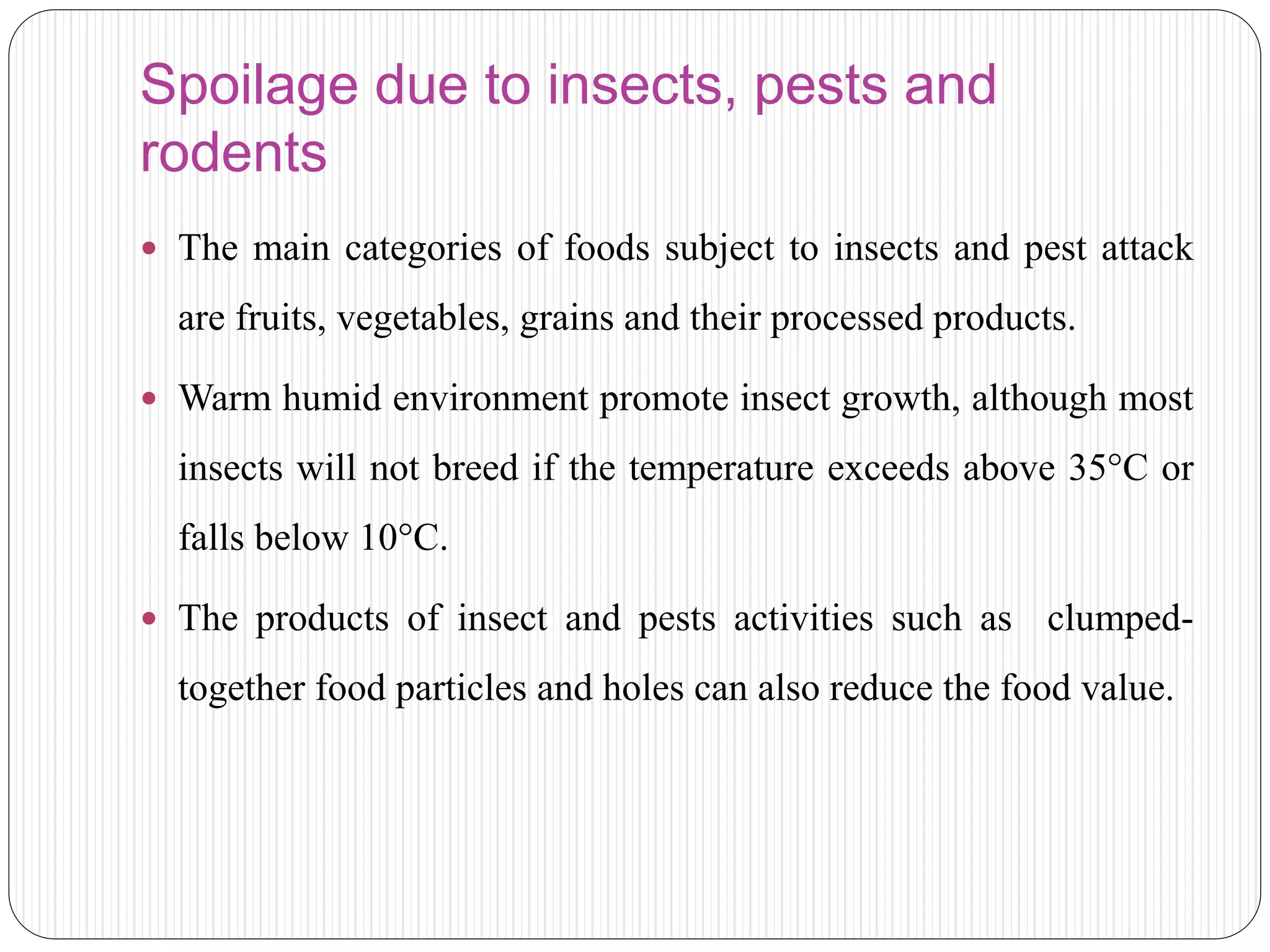Food spoilage is caused by changes in texture, smell, taste or appearance that make food undesirable for human consumption. The two most influential factors for stored grain spoilage are moisture and temperature. High moisture levels above 12% promote fungal and bacterial growth, while temperatures between 15-35°C allow insects to develop. Direct spoilage damages food through biological consumption, chemical reactions, or microbiological growth, while indirect damages result from inadequate storage facilities, transportation, or processing systems. Various control measures can be implemented including maintaining proper hygiene, stacking, disinfestation, and use of ecological, physical, or chemical techniques.































